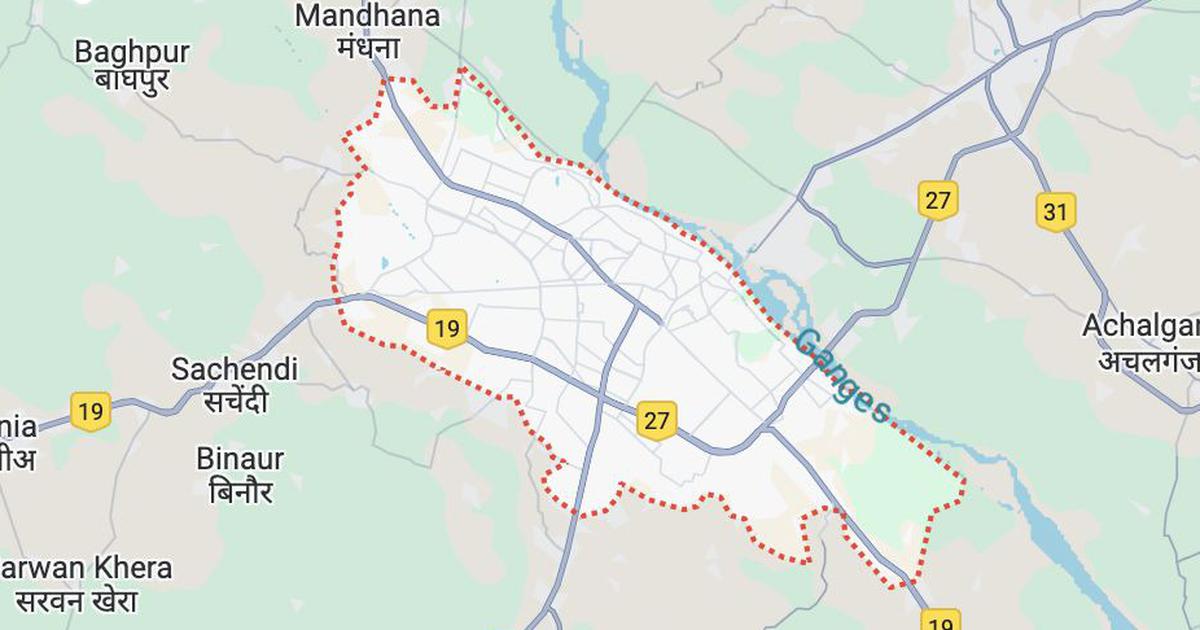
An ancient fort called Amagarh (Ambagarh), revered by the Meena tribal community, sits atop a hillock in the Ghat Gate locality of Jaipur, the capital of Rajasthan. The fort houses the temple of Ambaji, the tutelary deity of the Meenas of Nadhla gotra. What some people did there in the name of Hindutva has led to a confrontation between Adivasis and the Rashtriya Swayamsevak Sangh (RSS).
The temple inside the fort, which is a monument protected by the Archaeology Survey of India (ASI), is widely acknowledged and accepted as a sacred place of the Meenas. There was never any dispute about it. However, in the first week of June, a Hindutva group, which calls itself the Yuva Shakti Manch, not only hoisted a saffron flag on the temple located at a relatively inaccessible spot deep inside a jungle but also renamed the temple area as Ambika Bhawani Mandir and Ambakeshwar Shiv Mandir. The operation was conducted secretly. The idols of the temple were dismantled and replaced. The group wanted to occupy the place and turn it into a centre of its activities.
The temple is located in a desolate area under the control of the forest department. The Nadhla Meenas go there to perform rituals only on special, festive occasions. That was why it was a while before the Meena community learnt about the mischief. But as the news that a saffron flag was flying on a 40-foot high pole atop their sacred place reached the community on 16 July 2021, the reaction was sharp and immediate. The community launched a campaign to free the place from the intruders under the leadership of Ramkesh Meena, MLA from Gangapur city, and the state chief of Rajasthan Adivasi Meena Sewa Sangh.
As the Meena community raised objections, submitted memoranda and announced direct action, the saffron forces went on the defensive. They began talking about removing the saffron flag and undoing the damage to the idols. But as the flag was not removed, the Adivasis organized a public meeting at Amagarh on 21 July and removed the saffron flag.
This was absolutely unacceptable to the RSS and the organizations and individuals inspired by its ideology. They had a case registered against Ramkesh Meena and others at the Transport Nagar Police Station in Jaipur for hurting religious sentiments by tearing a saffron flag. That evinced a strong reaction from the Adivasis, too, who had a counter case registered against the flag-bearers of the RSS.
This was a cue for the vendors of hate to get cracking. Those who earned their bread and butter by raising the banner of Hindutva called a march in Jaipur. Updesh Rana, a rabid Hindutvavadi, began issuing statements. Attempts were made to use the Meenas associated with the Bharatiya Janata Party (BJP) and the RSS as proxies and to give the episode a communal and casteist colour.
Challenging and warning the RSS, Ramkesh Meena categorically stated that the Adivasis were not Hindus. He said they were nature worshippers and had their own religion, and saffron ideology and traditions should not be foisted on them. His assertion antagonized the Sangh to no end. Challenged by the powerful Meenas, the RSS felt it was losing its grip on the community. It tried to give the issue a Hindu-versus-Muslim colour. When that did not work, it pitted Meenas against Meenas so that they would be caught up in the internecine war and forget the real culprits.
Former IPS officer and well-known author Hariram Meena, talking about the historicity of this fort and its association with the Meena community cites Meena Itihas, a book written by Rawat Saraswat and published first in 1968, which says, “The Amagarh Fort definitely belonged to the Meenas and the board put up by the Archaeological Survey of India at the place endorses this view. This fort was not built for residential purpose. It seems to be a military structure. There is only one pond and two or three pucca houses inside the fort but it is surrounded by three concentric ramparts. Hence, it seems that this was a community asset of the Meenas. The fort, built, as it was, on the edge of the Purana Ghat, must have had strategic significance.” (p 139)
Hariram Meena, author of epoch-making novel Dhooni Tape Teer on the struggle of the Adivasis in Mangarh, says, “This episode only shows how communal forces have been encroaching upon and usurping public places. In Amagarh’s case, the idols of Shiv and Ganesh were desecrated on 4 June 2021 and an FIR was filed on 5 June 2021. The area has a substantial Muslim population. Some anti-social elements tried to give a communal twist to the desecration of the idols. But the conspiracy failed when it came to light that the youths associated with the so-called Yuva Shakti Manch were behind the incident. Then, on 13 June, new idols were installed. Between 5-7 July, construction material was surreptitiously transported to the place. An electricity pole was erected on 16 July and a saffron flag hoisted. It was decided to formally unfurl the flag the next day. But the programme had to be cancelled following MLA Ramkesh Meena’s visit. On 21 July, Meena returned to the fort and organized a public meeting there. When the flag was being brought down, it got torn. Making a mountain out of a molehill, a case was registered by the encroachers. One should remember that like Meenas, hundreds of Adivasi communities hold nature, their ancestors, the ancient god Shiva and his consort Parvati, the Aadishakti Mata, as sacred. This attempt to tinker with and occupy a religious and historical place like Amagarh, associated with the Meena tribal community should be strongly opposed.”
The Sangh and its affiliates probably did not expect such stiff opposition from the Meena community. They probably thought that their project for saffronization of the Adivasis had already been a success and that the Adivasis would be proud to become part of the RSS brand of Hindutva and there would be no voices of protest against their move to take over the sacred place. However, the Adivasi youth active on social media mounted such a sharp and strong protest that the RSS and other saffron forces were shaken to the core. But they have started a covert war. They are now pitting the members of the community who have fallen under the RSS’s spell against their own brethren.
While the youth and the intellectuals of the Adivasi community are fighting the saffron onslaught on Amagarh with their full might, BJP MP Dr Kirodi Lal Meena, who is a senior leader of the party and is famous as “Baba” in the community, has sided with the Hindutva forces instead of backing those fighting for Adivasi identity. Even that has evoked strong reactions but the Sangh is trying its best to distract the angry Adivasis through the good offices of Kirodi Lal Meena.
Kirodi Lal Meena is openly defending the Hindutva forces and opposing the members of his own community. He met state Chief Secretary Niranjan Arya and submitted a memorandum addressed to the chief minister demanding the arrest of Adivasi MLA Ramkesh Meena. The BJP MP says that the Meena community has always been Hindu and has been following Hindu rituals on all occasions, right from birth to death. He says that Ramkesh Meena has defamed the Meena community all over the country by claiming that the Meenas are not Hindus.
Reacting to the demand, Hansraj Meena, a social activist and founder of Tribal Army, who has been vocal on the Amagarh issue from the outset, says that instead of demanding the arrest of those meddling with Adivasi identity, the Meenas are fighting among themselves. He writes, “The youth of the Meena community have become conscious and aware. They are not rustics who can be wooed with a talisman. They will fight for their rights, respect and dignity. They will raise their voice against the communal forces, who are purveyors of hypocrisy and superstitions.
This story first appeared on forwardpress.in






